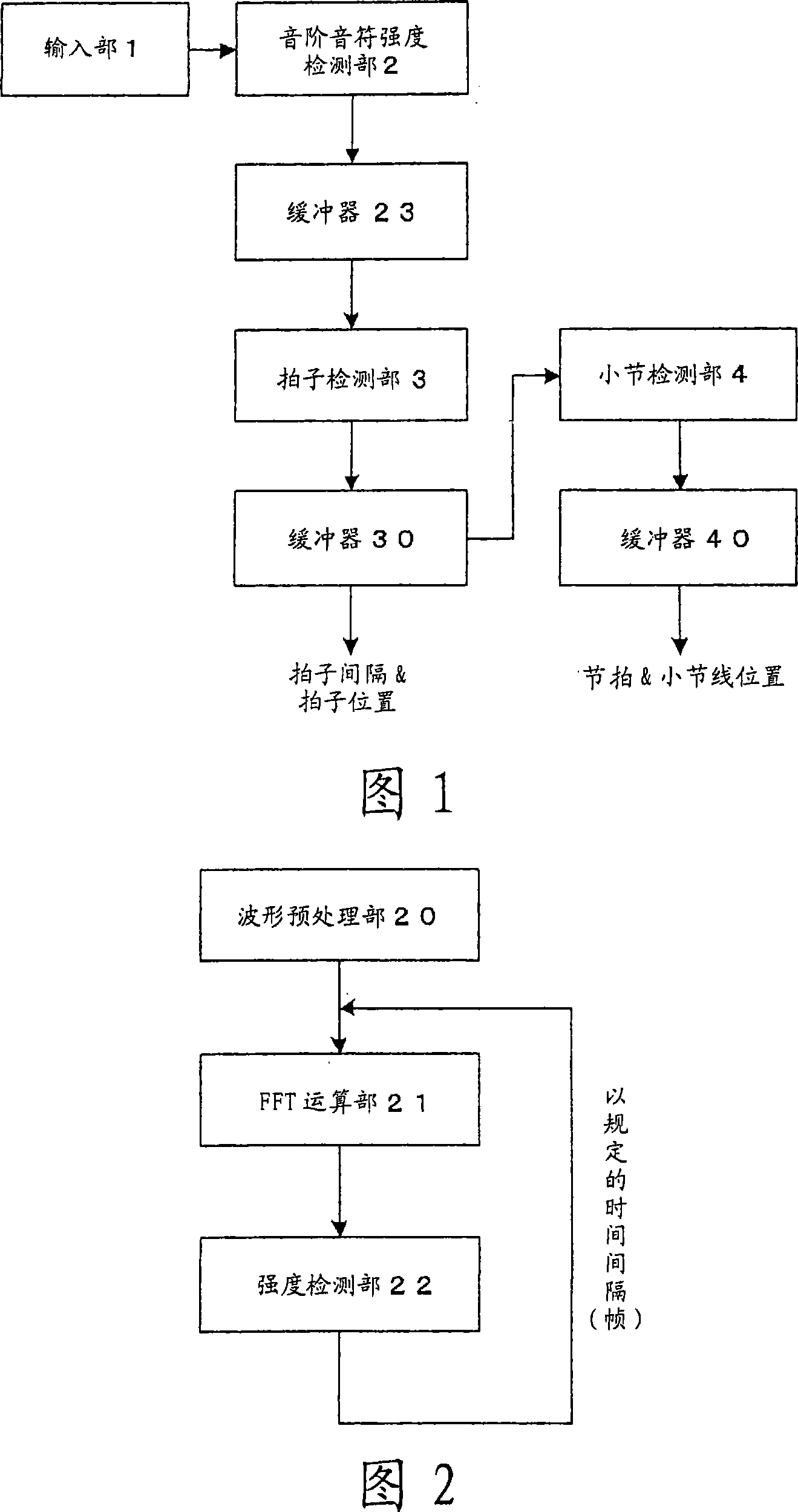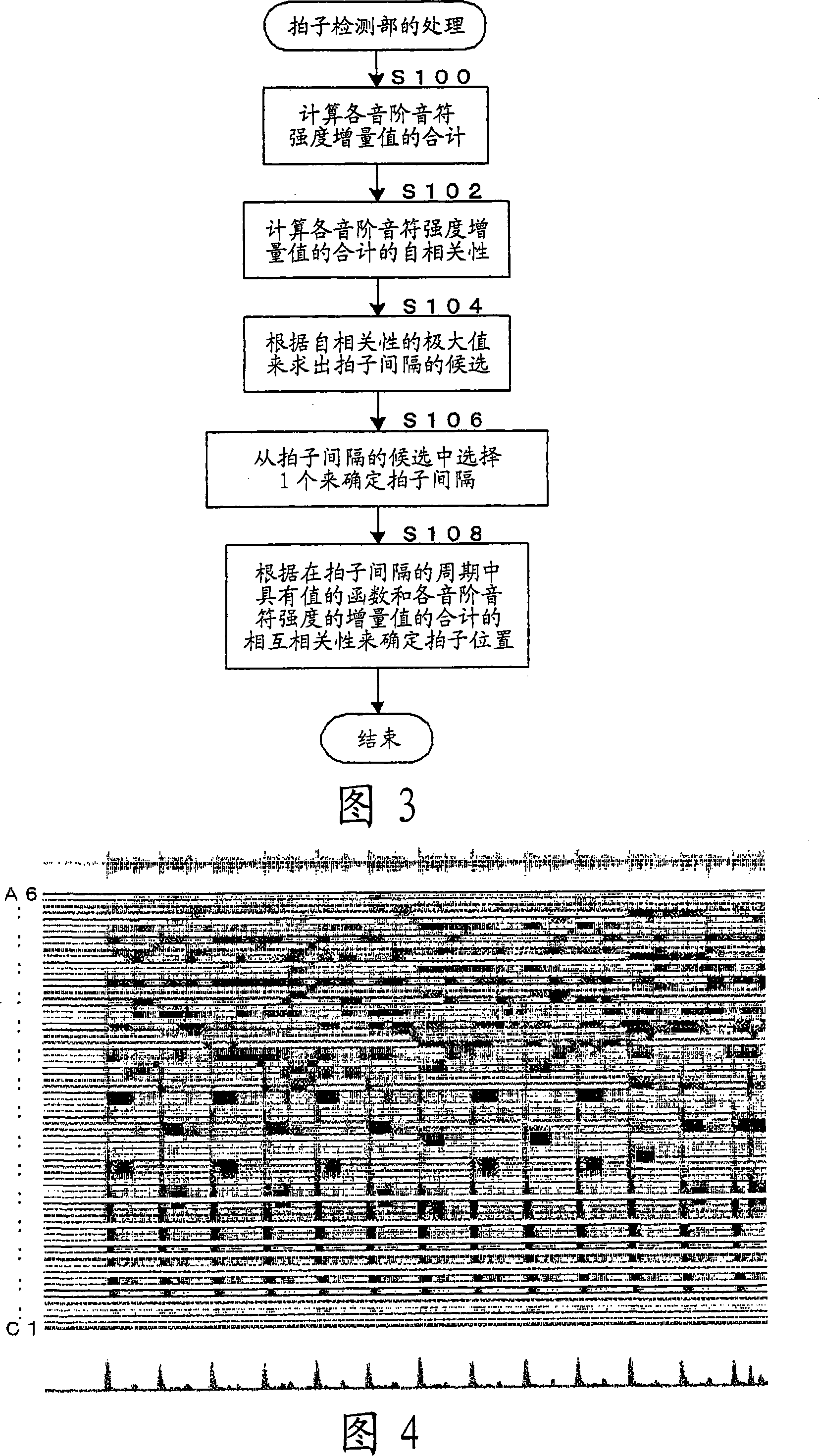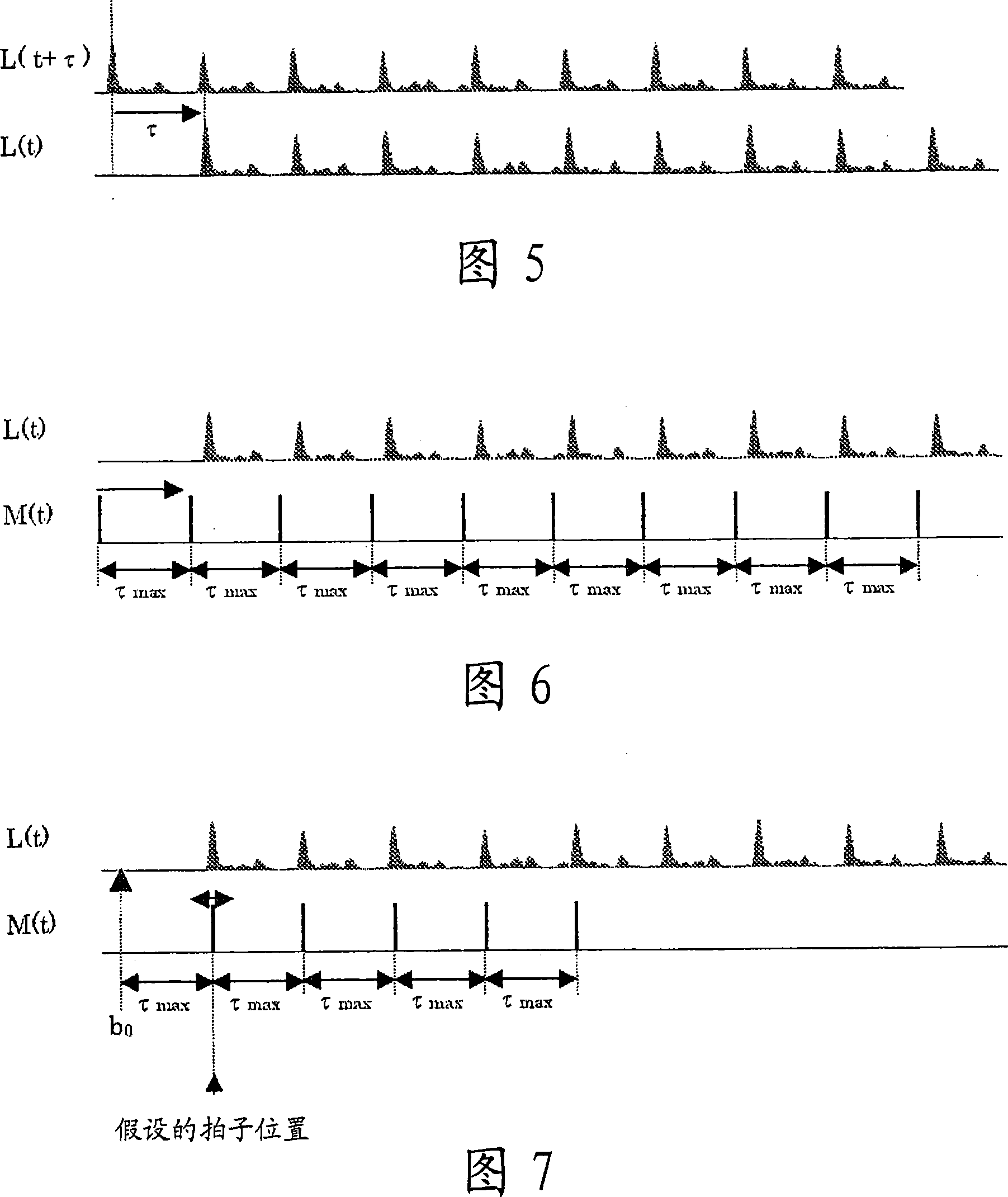Chord-name detection apparatus and chord-name detection program
A detection device and chord technology, applied to instruments, electro-acoustic musical instruments, etc., can solve problems such as inability to detect pitch
- Summary
- Abstract
- Description
- Claims
- Application Information
AI Technical Summary
Problems solved by technology
Method used
Image
Examples
Embodiment 1
[0197] Fig. 12 is an overall block diagram of the chord detection device of the present invention. In this figure, the structures of beat detection and bar detection are basically the same as those described above. Among the same structures, the structures for tempo detection and chord detection are different from the above structures, so the same description will be repeated below except for the formulas.
[0198] According to the figure, the present chord detection device is configured to include: an input unit 1 for inputting a sound signal; based on the input sound signal, FFT operation is performed using parameters suitable for beat detection at predetermined time intervals (frames), and according to the obtained Scale note strength detection section 2 for beat detection of each scale note strength of each frame obtained from the strength spectrum obtained; calculates the incremental value of each scale note strength of each frame for all scale notes, and obtains the value...
Embodiment 2
[0253] The structure of this embodiment is different from the structure of Embodiment 1. The Euclidean distance of the note intensity of each scale is calculated to detect the degree of harmony change, and the structure of the chord is detected by dividing the bars.
[0254] However, if the Euclidean distance is simply calculated at this time, the Euclidean distance becomes a large value due to a sudden sound increase (such as the beginning of a music) or a rapid sound decay (such as the end of a music, interruption, etc.). It is possible that although the harmony does not change, the measures are only divided according to the strength of the sound. Then, as shown in Figure 17, before calculating the Euclidean distance, the intensity of each scale note is normalized (Figure 17(a) is normalized as shown in Figure 17(c), Figure 17(b) Normalization is performed as shown in Fig. 17(d)). At this time, if the smaller value is used instead of the larger value (see Fig. 17(a) to (d))...
PUM
 Login to View More
Login to View More Abstract
Description
Claims
Application Information
 Login to View More
Login to View More - R&D
- Intellectual Property
- Life Sciences
- Materials
- Tech Scout
- Unparalleled Data Quality
- Higher Quality Content
- 60% Fewer Hallucinations
Browse by: Latest US Patents, China's latest patents, Technical Efficacy Thesaurus, Application Domain, Technology Topic, Popular Technical Reports.
© 2025 PatSnap. All rights reserved.Legal|Privacy policy|Modern Slavery Act Transparency Statement|Sitemap|About US| Contact US: help@patsnap.com



